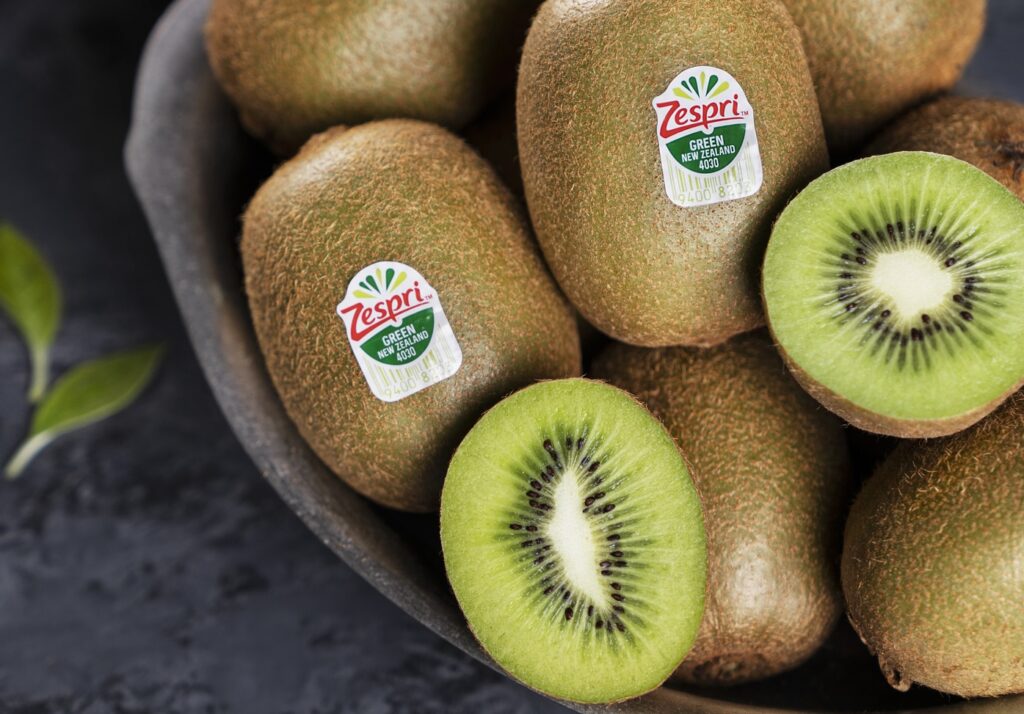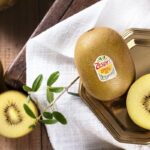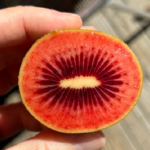The growth of a kiwifruit giant

From the March edition of Visión Frutícola magazine
When missionary Isabel Fraser returned to her native New Zealand from China in the early twentieth century, little could she have known the kiwifruit seeds she had brought back would give birth to a world-leading agricultural industry.
The fruit that sprouted from the vines spawned by those seeds would not be known as “kiwifruit” for another half-century, named after New Zealand’s furry kiwi bird, but they gained popularity with growers and by the mid-1970s more of the fruit was being exported than eaten domestically in the tiny island nation.
New Zealand grew to become a major force in global kiwifruit exports, but its leadership was not to be taken for granted with an ascendant competitor in the form of Chile making its mark in the 1990s. In response to that threat and a common vision to sell more kiwifruit in homes around the world, growers united to form the brand Zespri in 1997.
In the space of almost 25 years, Zespri has become synonymous with kiwifruit and it continues to consolidate its dominance with fruit sales of NZ$3.14 billion (US$2.25 billion) in 2019-20, of which around a third came from production outside New Zealand as part of its year-round supply strategy.
It is a strategy that means counter-cyclical supply from the Southern Hemisphere, or any speculation around windows of scarcity, are much less important than building consumer loyalty through quality product.
“We’re incredibly committed to meeting the demands of our consumers and delivering what they want. Our taste standards are critical to that,” says Zespri CEO Dan Mathieson.
“Under the Zespri system, kiwifruit growers set their vines in a way which ensures the best-tasting crops, with the highest sugar content.
“We measure that sugar content and ensure only the best tasting fruit is delivered to our consumers.”
The company is also able to rigorously control the quality of fruit that leaves New Zealand thanks to the monopsonistic power given to it by regulations implemented in 1999, establishing Zespri’s position as a single desk exporter. This means only Zespri is allowed to export out of New Zealand, with the exception of shipments to Australia and specific arrangements with prospective exporters that must be negotiated to send fruit elsewhere.
In recent years Zespri has been progressively improving its benchmarks for fruit quality characteristics such as sweetness and color, which makes it harder still for producers sell their crop, but the business model appears to be working. Not only is the quality higher now than it was a decade ago, but since the company was formed New Zealand’s yield per hectare has more than doubled to 12,373 trays per hectare, or around 44.5 metric tons (MT).
In the last season alone, the value of New Zealand’s kiwifruit exports surged by NZ$440 million (US$316 million), which is almost double the value of Chile’s entire kiwifruit crop.
One of the most astounding facts about the kiwifruit marketer is that with a net profit after tax of NZ$200.8 million (US$144 million), Zespri is substantially more profitable than some of the biggest names in the global fresh produce industry, such as Fresh Del Monte (US$69 million), Total Produce (US$79.8 million) and Calavo Growers (US$36.6 million).
Overcoming disease challenges, harnessing new varieties as a springboard to growth
The progress achieved comes despite the devastating setback of kiwifruit vine disease Psa that was first detected in New Zealand in late 2010, effectively rendering its star product ZespriGold commercially unviable.
“Psa was incredibly distressing for our kiwifruit growers, as well as the wider kiwifruit industry,” says Mathieson.
“It was certainly a really difficult time for the industry with a huge amount of uncertainty, but looking back now it was a period in which so many of the characteristics of our industry – collaboration, innovation, agility – came to the fore.”
The innovation he is referring to includes Zespri’s focus on new varieties, which has been part of the business model since well before the disease outbreak in 2010, supported by a joint breeding partnership entered into in 2004 with the government-owned Plant & Food Research.
In a 2012 paper published in the journal International Business Research, academics Sayeeda Bano and Frank Scrimgeour of the University of Waikato reflected on how a new variety contributed to New Zealand’s comparative advantage in kiwifruit.
“In the late 1970s, research was undertaken seeking to develop new varieties of kiwifruit. Progress was slow but there was some success with the Zespri Gold production moving from limited trials to exports commencing in 1998,” Bano and Scrimgeour said.
“The industry thus evolved from a one-fruit industry to a two-fruit industry.”
The outbreak of disease put that dual approach at risk, and the group was exploring its options for an alternative to Zespri Gold, also known as Hort16A, as growers’ orchards were being wiped out.
“Naturally there was a lot of uncertainty about what would happen with gold at that time,” says Mathieson.
“However, Zespri and Plant & Food Research’s new varieties development program had been exploring potential new varieties for a number of years and we were fortunate that we had SunGold kiwifruit.
“These new varieties take years to be ready for commercialization, so there’d already been a huge amount of work undertaken and we’re delighted that SunGold kiwifruit has proven so popular across the world and certainly been more tolerant to Psa than Hort16A.”
The innovation, however, does not stop there. In December 2019 Zespri introduced a red variety of kiwifruit to the market, and last year pledged to have 100 percent recyclable, reusable or compostable packaging by 2025.
“Our successful and collaborative relationship [with Plant & Food Research] has brought us our world-leading Zespri SunGold Kiwifruit, our recently commercialized Zespri Red Kiwifruit and helped deliver strong returns for our growers,” explains Mathieson.
“In recognition of the huge benefit the program brings to Zespri growers around the world, discussions have commenced over a proposed joint venture Kiwifruit Breeding Centre between Zespri and Plant & Food Research.
“The center would be dedicated to breeding new kiwifruit cultivars to deliver to consumers around the world,” he says, adding the proposal is subject to approval from numerous parties including the two groups and the New Zealand government.
Seizing international opportunities
Zespri is no stranger to controversy and in the early 2010s was hit by two ground-breaking revelations in key Asian markets.
The first was a finding from the South Korean Fair Trade Commission in 2011 that Zespri was trying to block retailers from stocking kiwifruit from Chile.
However, the fine was ultimately just a slap on the wrist in the context of Zespri’s operations and New Zealand’s exports to the country have effectively doubled since that time. In addition, Zespri has its own production on Korea’s Jeju Island.
In 2013, Zespri’s China-based subsidiary was found guilty of smuggling by a Shanghai court.
"The immediate challenge for Zespri, regardless of any possible appeal process, is to move forward positively in China," then CEO Lain Jager said at the time.
"In doing this our priority is to ensure that our relationships with our partners – importers, distributors, customers and Government officials alike – are based on solid and transparent principles of best-practice.
"The Zespri brand and our relationship with China are simply too valuable to compromise."
The New Zealand exporter was able to dust itself off from that setback as well, forging partnerships with new import partners and in 2015 it embarked on a pioneering project to start producing kiwifruit in China; the kind of venture many fruit companies avoid due to the intellectual property risks it entails.
Sure enough, few years later Zespri announced it would be taking some growers to court in China for illegally planting SunGold. It won the case in February 2020 and was awarded NZ$15 million (US$9.7 million) in damages.
Today the Chinese market is Zespri’s second-largest behind Japan, and in a newsletter published in January this year Mathieson reasserted his belief in the group’s Chinese future.
“We remain certain that a commercial trial, testing both the production and sale of Chinese-grown fruit under the Zespri system and brand, is the best way for us to continue to understand what options we have in China to mitigate the impact of the unauthorized plantings, and believe this may present a real commercial opportunity for New Zealand growers,” Mathieson said.
In October 2020, Zespri also produced its first trial crop in a US partnership, extending a Northern Hemisphere grower network that also includes Korea, Japan, Italy and France.
“We’re constantly searching for new opportunities around the world and we’re really encouraged by the growth we’re seeing,” says Mathieson.
“We remain focused on our major markets including Greater China, Asia Pacific, Europe and North America which are performing strongly.
“While we’re continuing to focus on growing these markets, we’re also committed to continuously developing and expanding more markets. What we also know is Zespri’s investment in market development attracts new consumers to the kiwifruit category which benefits the category overall.”
Mathieson believes Zespri is well-positioned to tap into consumer trends around healthy lifestyles, given the high Vitamin C content of kiwifruit, while its convenience as ready-to-eat is also an advantage.
As has been the case throughout its history, the company most certainly can’t stay still.
“Innovation will continue to be important, whether it be through our new varieties program, on-orchard techniques, or refining our marketing campaigns so that we’re making greater use of e-commerce channels and partnerships to connect with consumers who are spending more time at home,” he says.













































